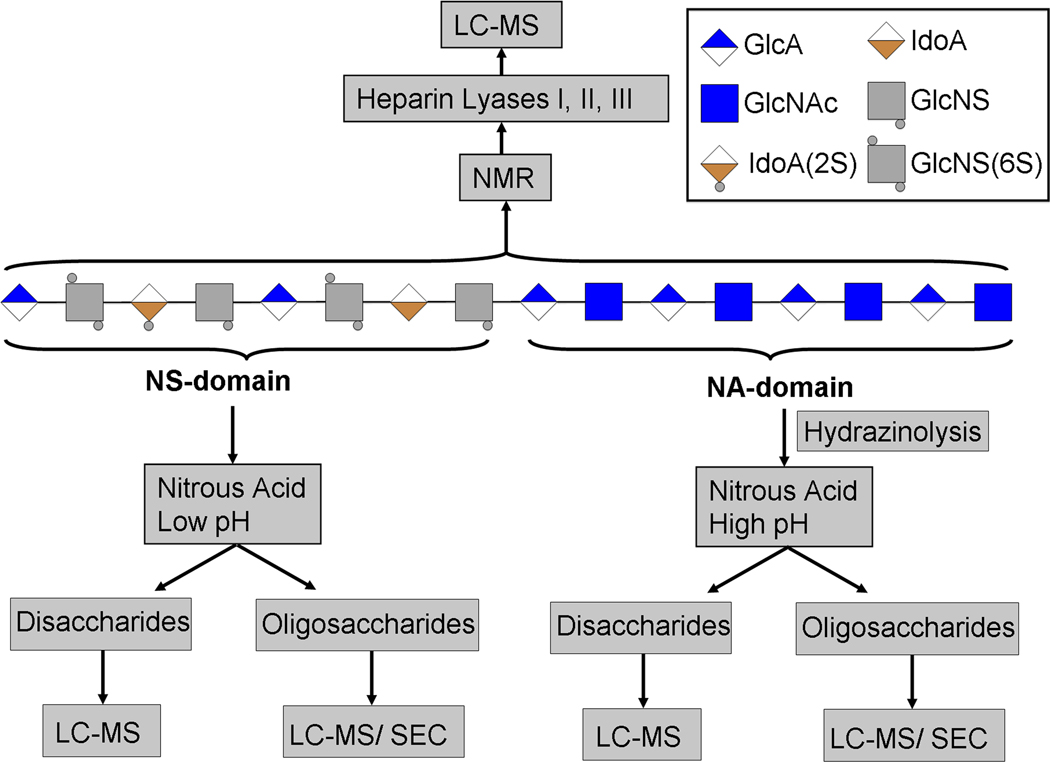Figure 1.
Overview of HS depolymerization using chemical and enzymatic approaches to prepare HS disaccharides and oligosaccharides for subsequent analysis by LC-MS, SEC-HPLC and IPRP-HPLC. HS chains are composed of a highly sulfated NS region and an unmodified NA region. The intact HS chains are amenable for NMR analysis. However, current MS instruments can not facilitate the structural analysis of the intact HS chains. Therefore, HS chains are depolymerized enzymatically by treating them with heparitinases that fragment both the NA and NS regions into disaccharides for LC/MS analysis. High pH nitrous acid specifically cleaves the HS chains at glucosamine residues. The NA region is fragmented by a two step process in which N-acetyglucosamine residues of NA region are deacetylated by hydrazinolysis and the resulting free amine containing glucosamine residues are subsequently subjected to fragmention by nitrous acid at pH 4.0. Low pH (pH 1.5) nitrous acid treatment specially cleaves NS regions into disaccharides. HS oligosaccharides that are resistant to nitrous acid treatment can be analyzed by size exclusion chromatography to map the heparome.

